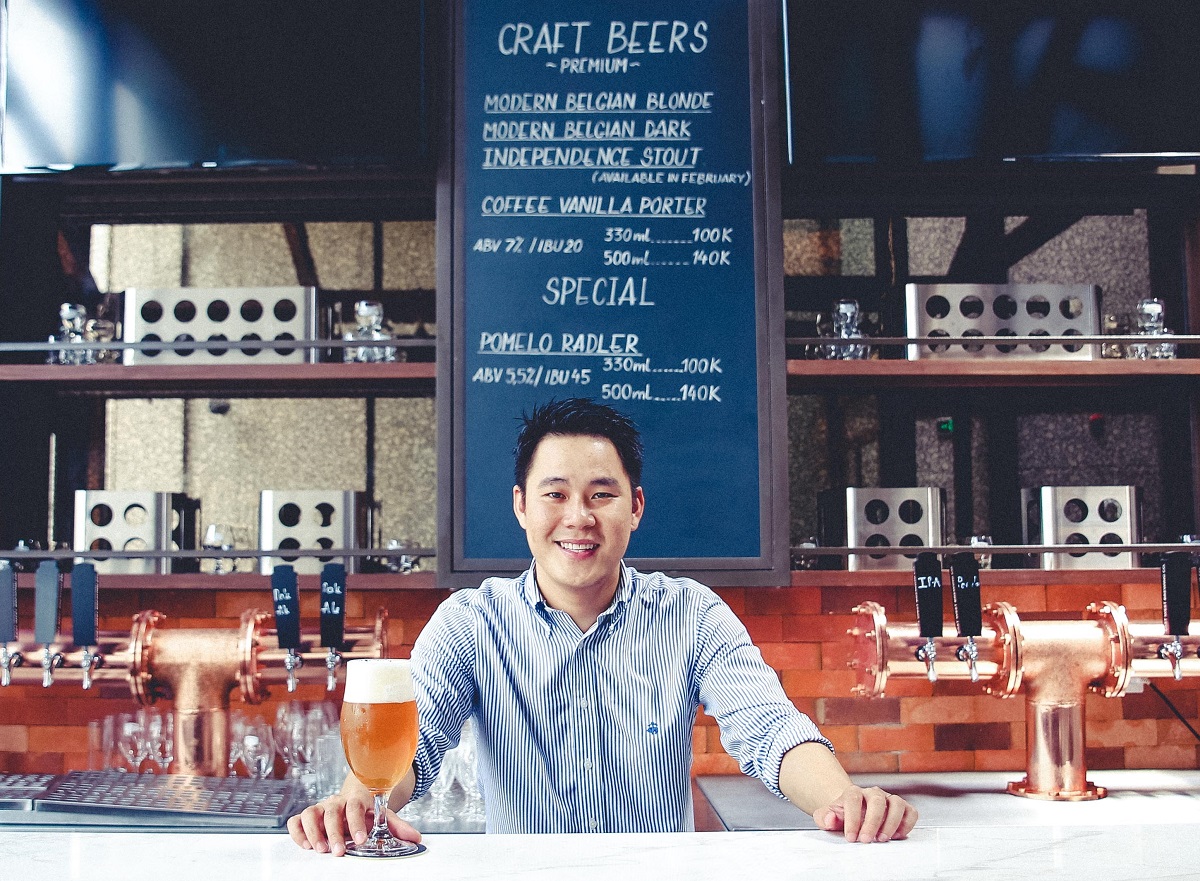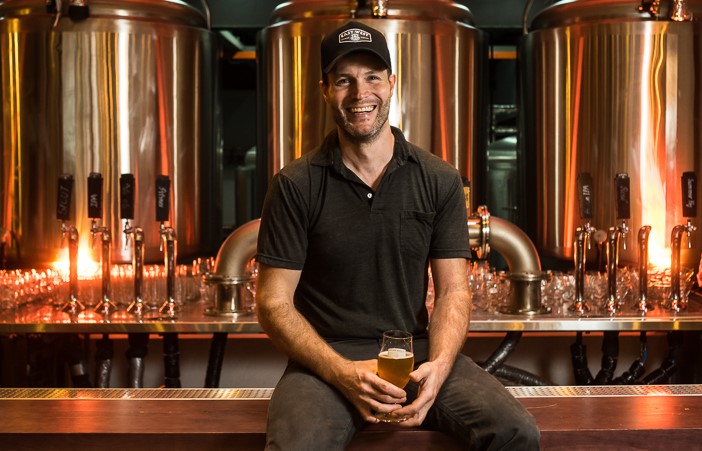THE BEER race is on in Vietnam with established brands and craft breweries expanding their distribution networks and offering exciting tastes.
Beer tops the list of the most consumed alcoholic drink by volume in Asia Pacific which currently accounts for 36% of the global market. Translated in value, a Mordor Intelligence report pegs it at $196.08 billion last year. By 2023, that amount is expected to jump to $317 billion, registering a 9.7% CAGR forecast for 2018-2023.
Ranking third behind China and Japan as Asia’s top beer consumer, Vietnam is trying to tip more beer glasses to its favour with diverse flavours. These days, big-budgeted companies or expats living in the country are not the only ones toasting its success. Locals who were once averse toward higher prices, cloudy appearances and different flavours other than what they’re accustomed to are increasingly acquiring a taste for the new and the bold, and minding less that these come with a heftier price tag of $2.15 to $4.70 for a 250ml- and a 375ml-glass. Helping spur demand are transients from across the globe.
East West Brewing Co. opened doors in District 1 of Ho Chi Minh in 2016 and counts both Vietnamese and expatriates as clients.
“Lately we’ve been seeing more travellers stopping by to see an operating microbrewery in the centre of town,” says General Manager Loc Truong. “Our Vietnamese customers, if they are returning customers, gravitate towards more flavours of traditional craft such as our Far East IPA, East West Pale Ale, and Independence Stout. New Vietnamese customers or first-time visitors are generally drawn towards our 3% Saigon Rosé as well as our recent Summer Hefeweizen. I think everyone that walks through East West has already decided that they want to discover something other than lagers.”

General manager Loc Truong’s battle plan for East West Brewing Co is to offer more of the same: continue to produce quality beers, open new distribution points, and excel in service.
Turning that discovery into an experience that would have clients coming back for more is what keeps East West’s Head Brewer Sean Thommen busy with new flavours. What guides him when he does so?
“First we take a look at our line-up and see what gaps in styles we want to fill. Our core line up is great for having a spectrum of flavours but maybe we want something even more light and easy drinking, or a heavy-hitting hoppy beer or something with local ingredients and different. It can depend on several factors, but we always have that conversation and go from there.”
A sense of local identity
The brewery carries eight core beer styles. “These are mostly based on styles we love from around the world,” shares Mr. Thommen. “However, we give a Vietnamese twist on some of these such as adding a Vietnamese Palm sugar to our Belgians instead of the traditional candy sugar or using a coffee grown nearby in our Coffee Vanilla Porter. These are carefully sourced as direct as possible. Truly farm to glass. Our seasonal beers can be even more distinct in the use of local ingredients. Usually, we have 3 to 6 rotating on tap at all times. These can range from slight variations of common beers to strange and wonderful new creations!”
Of the styles and ingredients East West has employed, its sour beers are proving popular to the local market. “I think they have created a surprisingly quick following. We use a lactic fermentation and brew with all sorts of Vietnamese fruit variations. They are bright, tart beers that are perfect for the climate. At first, Vietnamese people seemed put off by sour beer but as they got accustomed to the tartness, they quickly became believers. Beyond that we do many different beers with all sorts of stuff we find around here. We have one on tap now with sundried calamansi fruit and long pepper. We have in the works a beer made with our own malted mung bean. We have even done a beer with Butterfly Pea, a flower that turns the beer a vivid violet colour. Most of these beers are made small for in-house and not all of them are repeated, but sometimes we do something really special and it becomes a hit. It is always fun to surprise someone with a new flavour not traditionally associated with beer.”
Exotic intoxicating drinks
Furbrew also set up shop in 2016 but up North in the capital, Hanoi. According to its co-founder and master brewer Thomas Bilgram, one of its goals is to use the many tastes and aromas of Vietnam. Furbrew’s offerings include a Vietnamese noodle soup-inspired pho beer. It uses spices sourced from the local market that are roasted over an open fire to release the oils.
Among the flavours that Furbrew infuses in its line-up are lime leaf, lemongrass, ginger, black garlic, and tamarind.
For East West’s Mr. Thommen, local and exotic ingredients are just part of the formula of brewing quality beers.

Sean Thommen, head brewer at East West Brewing Co, is hands-on in sourcing ingredients, preferring to deal with farmers directly and/or companies that correctly handle products and respectfully treat employees and the environment
“We believe in connecting locally on many levels. Certainly, local and exotic ingredients are a fun way to connect the dots, but it is mostly about making good beer and passing the passion and creative spirit on to the consumer. Our East West Pale Ale has nothing weird or exotic about it, but the attention to detail and craft behind it resonates no matter where you are from.”
According to Mr. Thommen, any local ingredient used is carefully sourced for peak freshness and quality. “We work with farmers directly and/or companies that handle products correctly as well as treat their employees and the environment respectfully. However, traditional beer ingredients are not grown in Vietnam, as of yet, due to the warm, humid climate so we import these from around the world. We started with some pretty narrow options, but as we and several other breweries grew, we created a market that has encouraged more beer ingredients to be imported. This has increased the quality and variety across the board.”
Little Big League
Compared to more established brands such as Saigon Beer, Tiger, and Bia Hoi, craft beers could still be considered your new kid on the block having entered Vietnam’s beer scene a little less than four years ago. In that short span of time, however, the kid has grown and begun flexing its muscles.
Furbrew for one has expanded to Ho Chi Minh City. East West, on the other hand, now distributes to some 250 outlets in its HCMC base, Hanoi, de Nang, Nha Trang, Phu Quac, Vung Tau.
Among the players who cashed in early on craft beer in Vietnam is Pasteur Street Brewing Co. With some 200 beers to its name including Jasmine IPA, Passion Fruit Wheat, Lemongrass and Phu Quoc Pepper Saison and its award-winning Cyclo Imperial Chocolate Stout, the brewery not only distributes all over Vietnam, but exports to Singapore, Malaysia, Hong Kong, and the United States.
East West’s Mr Truong explains the growth: “There are craft breweries as well as craft-centric outlets that are opening up because of the love and appreciation for craft beer as a whole, who educate consumers about it. Because of this momentum, more and more opportunists start to open restaurants and breweries. The marketing budget of these new businesses especially on social media, helps the craft segment to get craft as a whole to the market. This in turn helps develop the craft segment.”
Analysts add that simple efforts of establishments, such as food pairings of craft beer and serving them in specific glasses that bring out the fullness or the uniqueness of flavours, are helping train the local palate. Well-travelled Vietnamese or those educated abroad who are exposed to foreign tastes and flavours are also helping influence mindsets of friends and family back home.
Preserving flavours in bottle or can
As the craft beer industry continues to grow, one challenge needing to be addressed is how to keep the taste fresh and the shelf-life longer. Some industry players suggest cans are the way forward because aside from completely blocking out damage caused by light and keeping oxygen levels extremely low, cans are also environmentally friendly.
At East West Brewing Co., bottled beer currently represents 80% of total business. Mr Truong agrees that cans are advantageous for both local and export markets. “As a brewer and a small business, having anything that extends shelf life really helps the business bottom line. Can you imagine over producing and under selling, and you have less than 100 days to make sure they sell? Even we are experimenting and testing with prolonging shelf life through different pasteurisation methods, and seeing which methods work best without compromising flavours and freshness.”
The secret ingredient
When asked about plans of growing their craft beer, Mr. Truong shares: “We think there’s really no secret to bringing the brand further. Just continue to produce good quality craft beers (the product) and continue to open up new distribution points (sales) and ensure that our distribution points are happy with us (service).” - JEAN ALINGOD-GUITTAP
Alle Artikel

 iConnectHub
iConnectHub
 Login/Register
Login/Register Supplier Login
Supplier Login


























